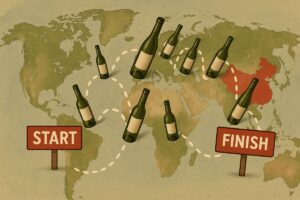
The dryness of the 2017 vintage, was expected, and it was also felt in Valpolicella and in its main wine, often characterized by important alcoholic strengths, not always adequately integrated. At the edition of the preview 2022 “Amarone Opera Prima”, exceptionally on stage in June - among the hottest and driest in the last decade at least - the Consortium Vini della Valpolicella presented the 2017 vintage of 39 companies, challenging a taboo that hardly made such a full-bodied wine approachable to summer temperatures. But Covid-19 and its winter restrictions have reshuffled the cards and made accessible the horizons that until now had remained unexplored. Thanks to a reorganized and impeccable service, the wines were able to be tasted at an ideal temperature, evaluating their characteristics without excesses of cold or heat.
But that’s not enough: the month of June also allowed us to experience open spaces, such as the Giusti Garden in Veronetta, the setting for the gala dinner, or to consider new settings, such as the enchanting eighteenth-century patrician residence of Palazzo Verità-Poeta, where the two scheduled masterclasses were held (one of which, the food-wine combination, we will shortly talk about, as it is particularly interesting from many points of view, and which saw Amarone undergo an exceptional stress test. Delighted by the dishes of the two-starred chef Nicola Portinari of the La Peca restaurant in Lonigo and under the supervision of the Consortium, four macro styles of Amarone were combined with four dishes inspired by the main export markets of the appellation: Southeast Asia, North America, Scandinavia and Central Europe. that has hit the target: breaking down usual combinations to imagine creative and alternative paths, not necessarily comfortable, ed). Finally, re-reading the link between wine and its territory in a broader and more complete way, not only from a pedo-climatic point of view, but also from an anthropological and cultural point of view, the Preview Amarone 2022 was able to approach the opening of the “Verona Opera Festival” n. 99, started with “Aida” by Giuseppe Verdi, staged with the extraordinary direction created originally by Franco Zeffirelli. A summer edition that has, in essence, made it possible to experience Verona and its wine valley at 360 degrees.
Wine valley that proves to be, above all, in perfect shape. Nineteen municipalities for almost 8,600 hectares of vineyards, a production that in 2021 amounted to 73.6 million bottles for a production value - measured by Nomisma Wine Monitor - of 500 million euros, of which almost half related to sales of Amarone. Valpolicella is confirmed not only as one of the main Italian Red denominations but also among the healthiest in the test of the balance sheets. This is stated in the analysis presented by Banco Bpm’s Studies and Research Department for the Consortium Vini della Valpolicella, which compared the performance of the Verona area against the national scenario of the sector.
From the economic results, it emerges that the companies of Valpolicella are among the best performing in terms of liquidity, lower debt, and better debt sustainability also in the year-Covid 2020: the net profit recorded by the companies of Valpolicella was, in fact, 6.4%, against an average of 0.4% in the premium segment and a much higher net worth (54.7% vs 43%).
Returning to the event and its locations, the usual technical tasting and tasting at the counters with the producers remained unchanged in the solemn Gran Guardia overlooking Piazza Bra, anticipated by the inaugural conference where was also presented the report on the climatic trend, regarding the 2017 vintage, among the hottest of recent decades after 2015, 2011 and 2009. Characterized by a winter with a warm climate with little rainfall, followed by late April frosts (which, however, in Valpolicella caused limited damage, thanks above all to the pergola training system, which places the clusters at heights close to two meters, less inclined to exceed the freezing point), 2017 passed with high temperatures throughout the phenological development of the plant (especially in June and August ) anticipating the phase of budding, flowering and, consequently, also of harvest, which took place 10 days earlier than usual, around 4th September.
The result is the grapes with less malic acid and more sugar content, but extraordinarily healthy, which have given wines that are decidedly warm, but also structured, complex and intense in aromas and with a bright color, capable of facing the long drying to which they are subjected to become Amarone. The alcohol content has not always managed to blend harmoniously with the wealth of polyphenols, anthocyanins, and residual sugar present in the glass, resulting in decomposition and with sensations of burning and dryness on the palate and bitter notes. Overall, however, we perceive the will of the producers to continue along the path - undertaken a few years ago - of the “lightening” of Amarone, a wine already very rich in dry extract, which once freed from redundant enological insistence, acquires greater drinkability and smoothness.
Copyright © 2000/2025
Contatti: info@winenews.it
Seguici anche su Twitter: @WineNewsIt
Seguici anche su Facebook: @winenewsit
Questo articolo è tratto dall'archivio di WineNews - Tutti i diritti riservati - Copyright © 2000/2025